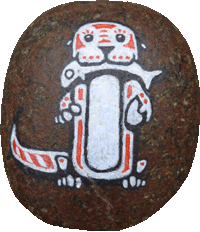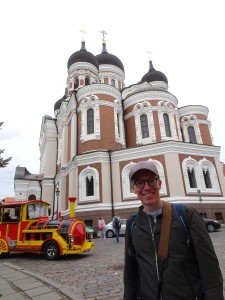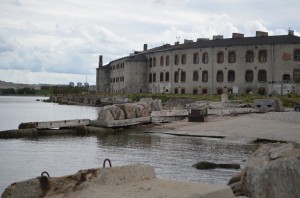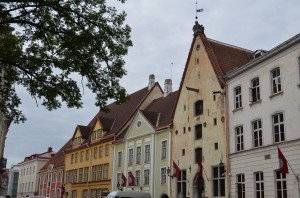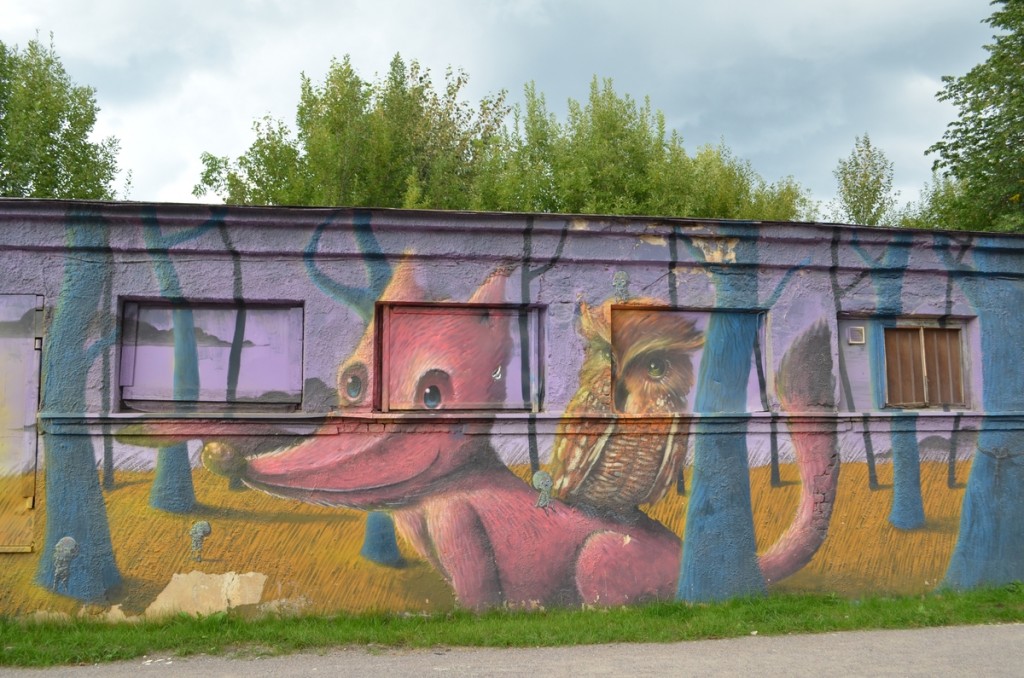Our lodgings are right in the very heart of the old town, an apartment up two flights of stairs and decorated in a shabby Moroccan style. It’s big and well equipped but just a tad irritating in a couple of ways. The tiny wash basin in the bathroom and the loo in the kitchen, specifically. Still, there is at least good coffee.
We headed out for a walk around the old town. It’s a wonderful jumble of buildings, from crunchy medieval wall towers, stately steep-roofed hanseatic merchant houses, onion-domed orthodox churches and plenty of shops, cafes and galleries to poke about it. Atmospheric medieval old towns are a bit of an Eastern European speciality, but this is right up there in the top drawer. I think we got lucky too; a glance out towards the docks from a high tower revealed no cruise ships in port. I imagine the cobbled streets of this little city are absolutely awash with tour groups when the ships are in. It certainly has all the other trappings of a tourist destination: a main square packed with restaurants touting “Estonian Gastronomic Cuisine”, a scattering of living statues, and of course a tiny, garish, toy road-train!
After lunch we stretched our explorations out to include the waterside areas north and west of the old town. There were plenty more signs of an old Soviet state revitalising itself at top speed, with some kind of chimney-topped industrial complex gradually turning into an art gallery, restaurant and conference space. We walked along the shore past the massive bulk of a 19th century sea fortress which had a latter life as a probably quite terrible prison in the Soviet era. Now it’s abandoned. Our Lonely Planet said that you could go in and explore the shadowy halls to your heart’s content. Alas the security fencing was up and it looks very much like the old sea fortress is also going through the process of reinvention! A detour through a lovely residential area of old wooden houses found us back in Telliskivi, and this time with the shops still open for browsin’ and buyin’! Maureen seemed particularly taken by the coffee cups with handles in the shape of ears. There’s no accounting for taste. We did get a nice top from Reet Aus, a clothes designer who works entirely with upcycling and is attempting to make it succeed on an industrial scale. So rather than the local/etsy approach of buying up unwanted clothes and upcycling them as one-offs, she is getting factories in Bangladesh and elsewhere to reuse offcuts as close as possible to source.Dinner was a tad disappointing. Lieb is much touted by bloggers and guides alike for modern Baltic cooking. It was pretty good, but nothing other than the dark rye bread (for which the restaurant is named) was really outstanding or worth the praise heaped on it.
Related Images:
